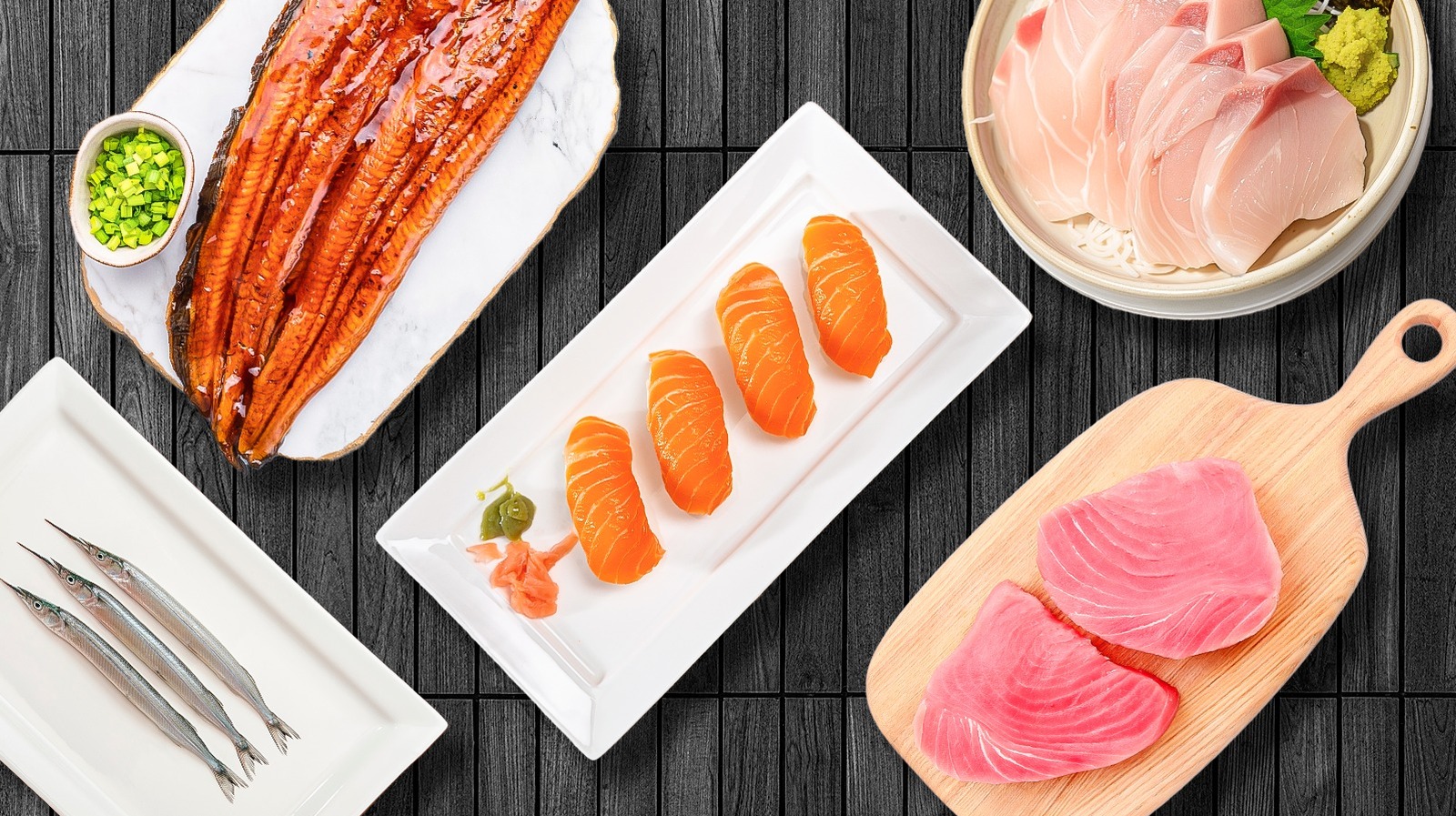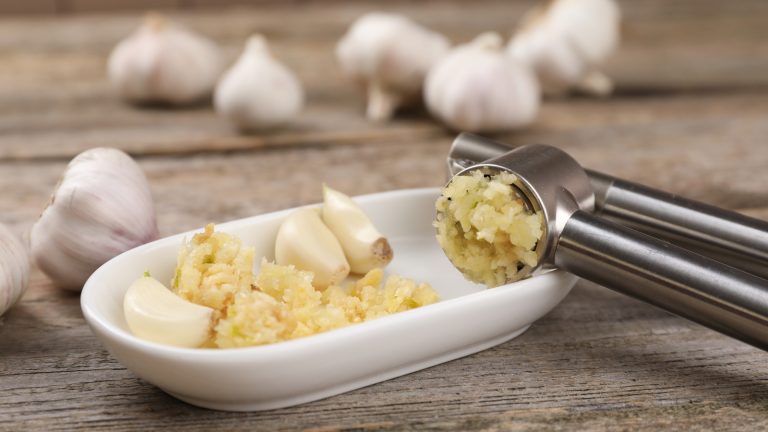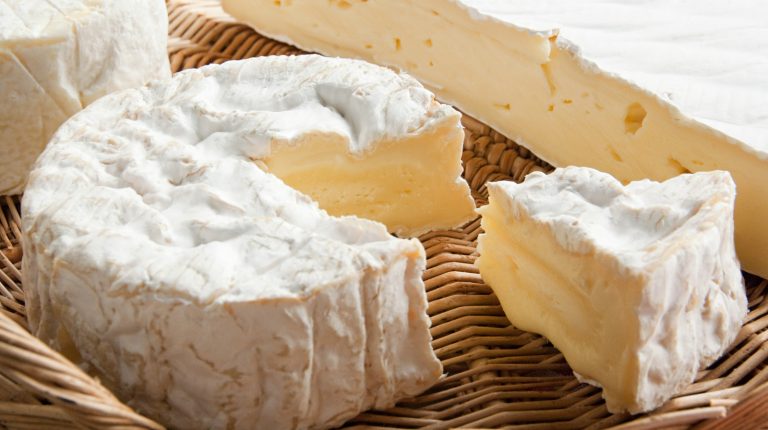In the United States, many people are familiar with California rolls or a scoop of ahi tuna in a poke bowl. But few would claim to be experts in all things sushi.
For Western audiences, sushi might have an air of mystique around it. For starters, it’s a sharp departure from dominant food traditions: raw fish isn’t exactly a staple in most American kitchens. Whether it’s the presentation, the unfamiliar ingredients, or just the idea of eating uncooked fish itself, sushi can feel both exciting and intimidating to the uninitiated.
The origin of pairing rice with fish goes back as far as the third century, when people living near the Mekong River in Southeast Asia began preserving fish in fermented rice, a technique that slowly spread to Japan over time. The style of sushi we recognize today — raw fish served over vinegared rice — didn’t emerge until the 19th century during the Edo period in Japan. Around the year 1824, a Tokyo food stall run by Hanaya Yohei began serving what’s now considered the earliest form of modern nigiri sushi.
Then, in the 1960s and 70s, with the rise of refrigeration and global seafood transport, sushi started to gain popularity outside of Japan. Access to fresh fish, along with growing curiosity about Japanese cuisine, made it possible for sushi to find a global audience.
From the ever-popular salmon and tuna to underrated stars like mackerel and snapper, the type of fish used in sushi can significantly affect its taste and texture. Factors like color, freshness, and fat content all play a role in shaping the flavor, too. If you’re curious about what makes sushi fish so special, read on to learn more about ten of the most classic choices. Why are certain species so prized? What makes some cuts more expensive? And how different do they really taste? Let’s dive in.
Tuna (Maguro)
Tuna is one of the most iconic and popular fish used in sushi. Known as maguro in Japan, this term encompasses a variety of tuna species, although the most high-quality sushi is made from Pacific bluefin tuna. What makes tuna so popular is its versatility: there’s a wide range of flavors, textures, and price points depending on the cut and species. Whether you’re eating at a conveyor belt joint or a high-end restaurant, you’re almost guaranteed to find tuna on the menu.
Tuna is generally served as one of three main cuts, with accompanying terminology to specify which one you want. The most common is akami, which is the lean, deep red flesh from the sides of the fish. It has a clean, tangy taste and a velvety texture that holds its shape well on top of rice. Chutoro, or medium-fatty tuna, comes from the belly area and is more tender, with a subtle sweet and buttery taste. Then there’s otoro, the most prized and expensive cut that comes from the fattiest part of the belly. It used to be a favorite cut in Japan, but younger diners have been gravitating towards leaner cuts in recent years, partly due to changing taste preferences and price.
Sashimi and nigiri are the common formats in which tuna is served, while another popular variation is negitoro, made with minced fatty tuna and rice wrapped in nori. From light and lean to decadent and rich, tuna can appeal to nearly any taste buds.
Salmon (Sake)
Salmon, also known as sake, is one of the most popular fish used in sushi today, but that wasn’t always the case. In fact, raw salmon generally wasn’t eaten in Japan until the 1990s. Its journey to global sushi fame is largely thanks to a clever marketing campaign by the Norwegian government.
Traditionally, raw salmon was avoided in Japanese sushi due to the risk of parasites like anisakis, especially in the wild Pacific varieties. Instead, it was typically dried, salted, or grilled before consuming. But in the early 1980s, the country of Norway was facing a surplus of farmed Atlantic salmon and saw an opportunity to remedy it while boosting sales with a bold marketing move.
In 1986, the Norwegian government and seafood industry launched “Project Japan,” a targeted campaign to increase their exports by convincing Japanese chefs and consumers that Norwegian salmon was safe for raw consumption. These fish were raised in controlled environments and fed parasite-free diets, making them a reliable and hygienic option in compariston to wild salmon. Despite initial resistance, especially from traditional chefs, the effort eventually paid off: today, salmon is one of the most popular fish for sushi.
Salmon is particularly beloved in Western countries, where its mild flavor, buttery texture, and vibrant color have widespread appeal. Creative variations like seared salmon or in maki rolls also contribute to its popularity, especially outside Japan. From a fish once deemed unfit for raw consumption to one of the most requested items at sushi restaurants, salmon has made an impressive leap in the sushi world.
Yellowtail (Buri)
Yellowtail, also known as Japanese amberjack, is one of the most commonly used fish in sushi, beloved for its smooth, fatty texture and mild, buttery flavor. It’s especially popular in nigiri and sashimi, where its richness and melt-in-your-mouth texture really shine. In Japan, it’s specifically prized as an important ingredient in New Year celebrations. But behind its simple English moniker lies a surprisingly tangled web of species, seasonal variations, and regional naming conventions.
Sushi lovers might know this fish as hamachi, but that term technically refers to a specific stage in the life cycle of the Japanese amberjack. In Japan, the same species goes by different names depending on its age: wakana when young, hamachi as a teenager, and buri when fully grown. To make things even trickier, these names can vary by region: in Kansai, hamachi refers to a larger fish than in the Kanto region, where it might be called something else entirely. But generally, the younger fish have a softer texture and taste, while the more mature ones have a darker color and stronger taste.
Adding to the mix are similar but distinct species like hiramasa and kanpachi, which differ slightly in flavor and texture. In the U.S., all of these could be generically labeled as “yellowtail,” but in Japan, the naming distinctions are useful. Avid sushi connoisseurs can pinpoint the differences in taste and texture between the varieties.
No matter which variety you’re served, yellowtail offers a luxurious eating experience. Its high fat content gives it a rich texture balanced by a slightly tangy finish. Whether you prefer the buttery softness of hamachi or the richness of buri, yellowtail is a classic for a reason.
Sea Bream (Tai)
In Japan, red sea bream, also called red snapper or tai, is considered one of the most prestigious and culturally significant fish. Nicknamed as the “king of a hundred fish,” tai has been a beloved part of Japanese cuisine for millennia, with records of its consumption dating back to the prehistoric Jomon era. Its mild flavor, cultural symbolism, and versatility in the kitchen have all helped cement its place as a sushi staple.
Tai is known for its almost-translucent white flesh, which is firm yet tender. The flavor is light with a clean, mineral taste. This makes it a favorite for sashimi and nigiri, especially when served slightly aged or briefly cured to bring out the deeper umami flavor. Its elegant taste makes it ideal for those who prefer lighter fish, offering a nice contrast to fattier options like tuna or salmon.
Beyond sushi, tai appears in everything from grilled dishes to traditional meals where it’s often served with rice or thin noodles. It’s also deeply woven into Japanese celebratory culture: the word tai is a part of the word omedetai, which means “happy” or “auspicious.” As a result, tai is often served whole at celebrations likes weddings and festivals.
While it may not have the mainstream popularity of salmon or tuna in the West, sea bream holds a special place in Japanese cuisine. Its subtle flavor and cultural significance make it a prized choice at sushi counters.
Mackerel (Saba)
Mackerel, or saba, is a flavorful, slightly oily silver fish that plays a unique role in the world of sushi. Known for its briny taste and soft texture, the conventional way to prepare mackerel for sushi is to lightly cure it with salt and rice vinegar. This sujime method not only enhances the fish’s flavor but also preserves it, making it safe to eat raw.
Because mackerel is highly perishable, traditional sushi chefs developed this method of preservation to tone down the strong fishy odors, balance the flavors, and inhibit bacterial growth. Fresh mackerel naturally contains high levels of histidine, an amino acid that can quickly convert into histamine after the fish dies. In large amounts, histamine can lead to food poisoning, so curing the fish isn’t just for taste, but for safety, too. Luckily, mackerel also contains plenty of omega-3 fats, so once it’s prepared properly, it’s actually quite a healthy choice!
The resulting product from the curing process is called shime saba, a sushi classic with a distinctive salty-sour taste. Its strong flavor might not appeal to everyone at first bite, but fans of saba praise its complexity and uniqueness. It’s not as ubiquitous as salmon or tuna, but mackerel holds a loyal following among sushi lovers.
Horse Mackerel (Aji)
Horse mackerel, or aji, is a popular sushi fish known for its delicate flavor, glossy silver skin, and tender, slightly fatty texture. While it may not be as widely available in the U.S., it’s a popular choice for nigiri and sashimi in Japan, often served with garnishes like grated ginger and chopped green onions.
Despite its name, horse mackerel isn’t actually a type of mackerel. It belongs to the jack family, which makes it more closely related to the kanpachi and hamachi species of yellowtail as opposed to mackerel.
Traditionally in Japan, horse mackerel was cured with salt and vinegar, just like shime saba, to enhance its flavor and extend its shelf life. But in contemporary times, it’s also served raw, which lets the soft texture and umami flavor shine through. It’s not as fishy-tasting as regular mackerel, making it a good choice for beginners branching out into new types of sushi. Although it may fly under the radar outside of Japan, horse mackerel is cherished by chefs and sushi fans for its balance of flavors and texture.
Eel (Unagi / Anago)
Eel may surprise some sushi newcomers, but it’s long been a menu staple, especially outside of Japan. Unlike most sushi fish, eel is always cooked, making it an appealing choice for diners wary of raw seafood. There are actually two types of eel used in Japanese cuisine: unagi refers to a freshwater eel, and anago is a saltwater eel. Though they look similar, the flavor and texture of each are distinct.
Unagi is by far the more common of the two in Western sushi restaurants. It’s typically grilled and brushed with a sweet-savory soy sauce glaze. The resulting texture is soft, fluffy, and slightly smoky, with a rich umami flavor that sets it apart from other fish. Unagi is prized not only for its taste, but also for its nutritional profile: it’s high in vitamins A and B and is traditionally believed to help with stamina and endurance during Japan’s hot summers. In fact, there’s a custom of eating unagi on the Day of the Ox in late July to combat heat fatigue.
Anago, on the other hand, is a bit more delicate and sophisticated. This saltwater eel has a lighter taste and less fat than its freshwater counterpart. It pairs well with vinegared rice and is often served as anago nigiri with a brush of sauce on top. While harder to find outside Japan, it’s considered the more traditional choice between the two for sushi.
Flounder (Hirame)
Flounder, known as hirame in Japan, is a highly esteemed choice for sushi. As a type of flatfish, hirame is appreciated for its delicate taste and firm, springy texture. It’s often sliced very thin to make it easier to chew, and is typically served as sushi or sashimi. In Japan, hirame is most prized in the winter months, when wild-caught specimens are at their firmest and most flavorful.
Flatfish are quite the biological oddity. They undergo a bizarre transformation as they grow: they start life swimming upright like most fish, but as they mature, one eye migrates to the other side of their head so they can swim along and blend into the ocean floor. This strange asymmetry once puzzled Charles Darwin, and it also contributes to the visual variety of flatfish when it’s served as sushi. It’s technically classified as a white-fleshed fish, but its color can range from pale pink to gray, often streaked with veins, depending on which part of the body the slice comes from.
A prized cut from this fish is engawa, the meat from the fin muscles that has a richer fat content and a chewier texture. Because there’s so little of it per fish, engawa is considered a specialty item and is often seared or scored for tenderness.
In Japan, hirame is so culturally familiar that it’s even inspired slang; a hirame ningen, which translates to “flounder person”, is someone who’s always “looking up” (just like the fish) in search of a superior’s approval. Even though flounder is generally less popular in the West, its subtle flavor and fascinating backstory make it a standout on any sushi menu.
Striped Jack (Shima-Aji)
Striped jack, or shima-aji as it’s called in Japan, is a favorite among sushi lovers, even if it’s less popular outside of the country. Its name is a bit misleading: shima means “striped” and aji means “horse mackerel,” but this fish doesn’t have much in common with actual horse mackerel, which is oilier and has a stronger aroma. Instead, shima-aji has a clean, delicate flavor with just a little bit of fat, offering a lighter alternative to more common sushi staples.
The taste of striped jack has been described as a cross between mackerel and yellowtail. At peak freshness, the meat is slightly sweet and holds up beautifully in nigiri and sashimi. In Japan, chefs sometimes age it for a day or two to deepen its umami and soften the flesh.
In the wild, shima-aji is seasonal during the summer months, but with aquaculture farming, it’s now available year-round. Farm-raised varieties are far more common than wild-caught, and they tend to be slightly fattier, too. Still, striped jack remains something of a hidden gem in the U.S., more likely to be found in higher-end restaurants than on standard menus.
For fans of yellowtail and mackerel, striped jack is a natural next step to try. Its elegant balance of flavor, texture, and mild sweetness has earned it a devoted following.
Bonito
Bonito, otherwise known as skipjack tuna or katsuo in Japan, is a fish with two identities in Japanese cuisine: one as a fresh ingredient for sushi and sashimi, and the other as dried bonito flakes. While it’s technically a type of tuna, its flavor and usage is completely unique compared to other fish.
In the context of sushi, katsuo is typically prepared using the tataki method, meaning the fish is lightly seared on the outside while remaining raw in the center. This technique helps preserve the fish’s flavor while reducing its natural oiliness and briny taste. It’s often garnished with scallions, grated ginger, or ponzu sauce to balance its strong taste. Since katsuo deteriorates quickly after being caught, it’s hardly ever served completely raw, especially outside Japan. The taste can vary slightly depending on the season; spring-caught katsuo tends to be lighter, while fish caught in the summer and fall are richer.
Katsuo’s most widespread legacy is katsuobushi, the dried bonito flakes used to make dashi, a broth that’s the base of countless Japanese dishes. These flakes are made from bonito fish that are boiled, smoked, and sometimes fermented. The resulting product is a hard, wooden-like block that’s shaved into paper-thin flakes, which are then used in soups and sauces and as a garnish for practically any Japanese dish. Whether it’s served in sushi form or shaved into a steaming bowl of broth, katsuo plays a incredibly important role in Japanese cuisine.





